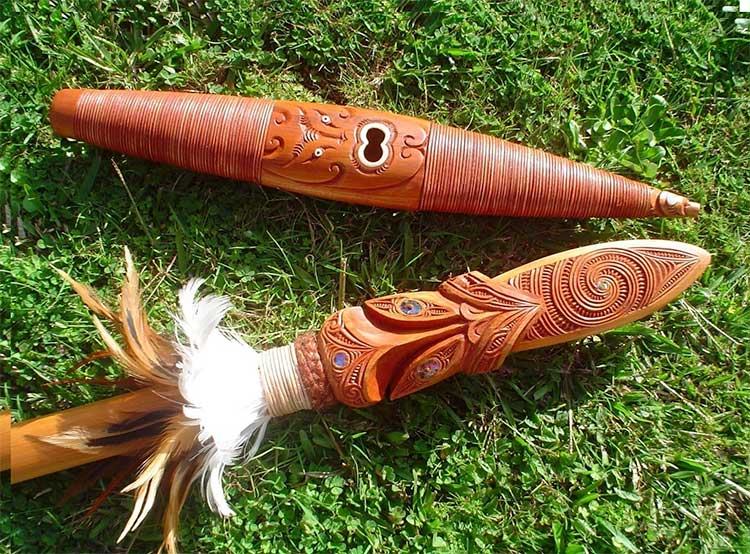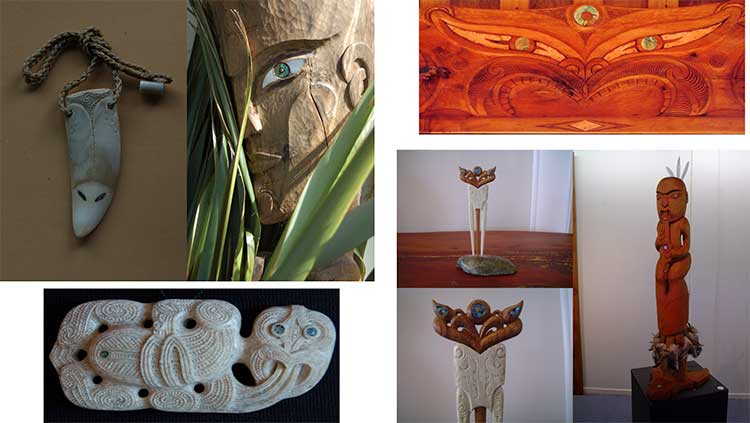Whakairo (Carving)
Discover the Rich Tradition of Whakairo (Carving)
Whakairo, or Māori carving, stands as a testament to centuries of cultural evolution and artistic expression. Primarily practiced in mediums such as wood, pounamu (nephrite jade), bone, and onewa (basalt), this art form holds deep cultural significance and serves multiple purposes within Māori society. James has over 30 years of experience in the Toi Māori (Arts) field having trained early on at Te Wānanga o Aotearoa under the tutelage of Dr Pakariki Harrison and since then he has developed a wide and varied career focusing on Māori Arts.
Preserving History and Identity
At its core, whakairo serves as a tangible record of history and events, encapsulating the essence of Māori identity. Each taonga (treasure) intricately carved carries with it narratives of ancestors, significant events, and cultural values. These carvings are not mere decorations; they are living repositories of knowledge and tradition.
Symbolism and Meaning
Every element of a carved piece—from the positioning of figures to the intricate patterns—holds symbolic meaning. Faces depict ancestors, while patterns symbolize genealogical connections and tribal affiliations. Through these visual cues, whakairo becomes a language in itself, readable by those versed in Māori culture.


Connecting Past and Present
Despite the absence of written records in traditional Māori society, whakairo served as a vital means of communication and storytelling. Each carving told a story that could be interpreted by the community, ensuring that history and teachings were passed down through generations.
Experience Whakairo with Tahaa
At Tahaa, Tā Moko Studio and Māori Arts, we honor the tradition of whakairo with reverence and skill. Whether you’re seeking a custom carving to celebrate heritage or looking to explore the beauty of Māori art, we are here to guide you. Contact us today to begin your journey into the rich world of whakairo and discover how these timeless treasures can enrich your life.